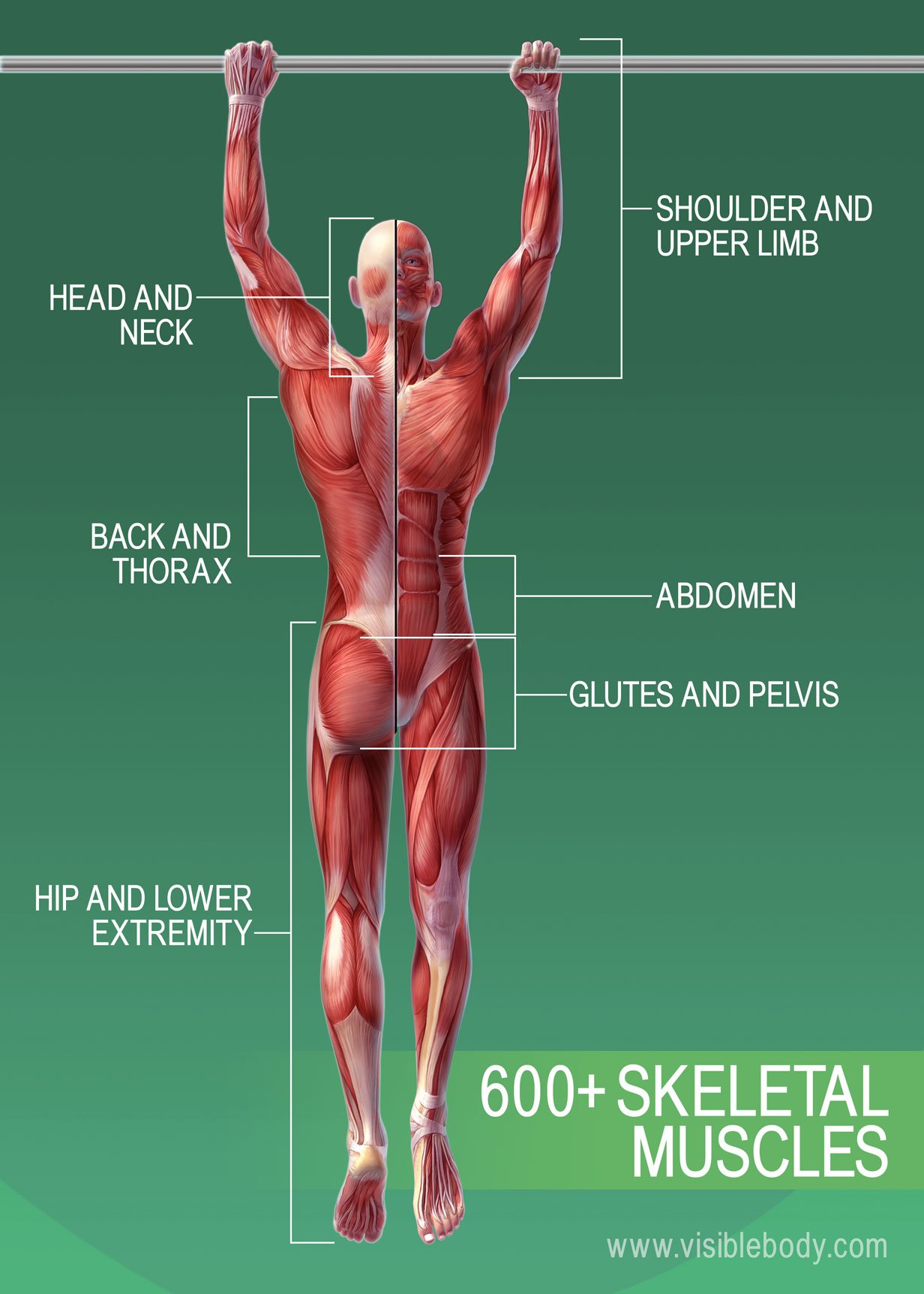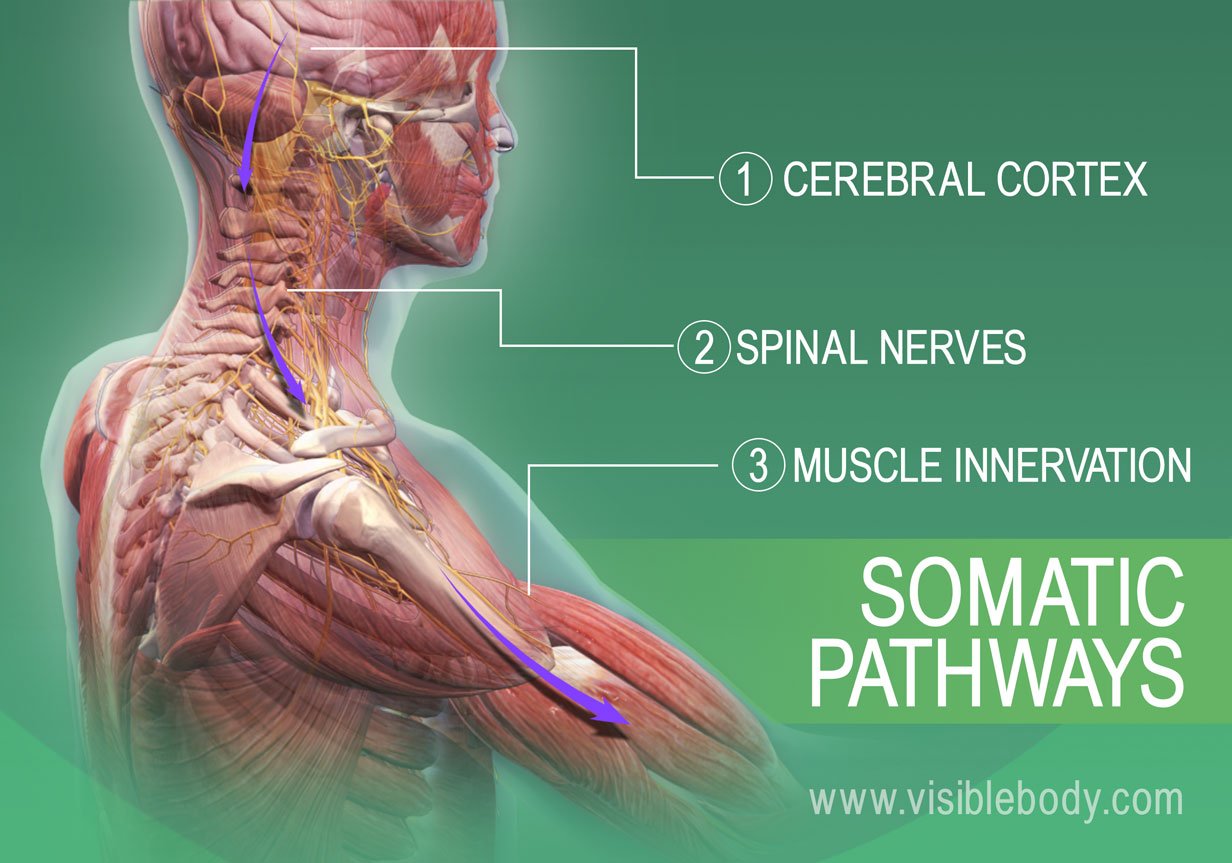
At the simplest level, muscles allow us to move. Smooth muscle and cardiac muscle move to facilitate body functions like heartbeats and digestion. The movement of these muscles is directed by the autonomic part of the nervous system—those are the nerves that control organs. Skeletal muscles move our bodies in space. They take direct instruction from the specific nerves that innervate each muscle. Want to learn more about the muscles in the human body? Here are five other facts to keep in mind about the muscular system.

The muscles that move the human skeleton vary greatly in shape and size and extend to every part of our bodies. The muscular system contains over 600 skeletal muscles alone, which make up about 40% of our mass. Blood vessels and nerves run to every muscle, helping control and regulate each muscle’s function.

In the muscular system, skeletal muscles are connected to the skeleton, either to bone or to connective tissues such as ligaments. Muscles are always attached at two or more places. When the muscle contracts, the attachment points are pulled closer together; when it relaxes, the attachment points move apart.

Muscles contract and relax to move bones. The elbow joint bends (flexes) when muscles pull on the radius and ulna of the arm. Muscles contract when messages travel from nerves to muscles and trigger chemical reactions. These reactions change the internal structures of muscle fiber cells, a process that shortens the muscle. The muscle fibers relax when the nervous system signal is no longer present, thus reversing the shortening.

Not all muscle tissue is skeletal muscle. Smooth muscle tissue is in the walls of many human body organs and helps those organs move to facilitate body functions. The alimentary canal (esophagus, stomach, and intestines) includes muscle tissue that contracts and relaxes to move nutrients through the digestion process. The urinary bladder also includes muscle tissue that contracts and relaxes to hold and release urine. Heartbeats are the result of the contraction and relaxation of muscle tissue in the heart wall. Smooth muscles in the walls of arteries help move blood through the body.
 How do skeletal muscles move? It happens when the muscular system and the nervous system work together: Somatic signals are sent from the cerebral cortex to nerves associated with specific skeletal muscles. Most signals travel through spinal nerves that connect with nerves that innervate skeletal muscles throughout the body. Want to flex an elbow joint? Your cerebral cortex sends a signal through your spinal nerve to the nerves that innervate muscles around the elbow joint. When that signal reaches the muscle tissue its cells reorganize, causing a contraction that bends the elbow joint!
How do skeletal muscles move? It happens when the muscular system and the nervous system work together: Somatic signals are sent from the cerebral cortex to nerves associated with specific skeletal muscles. Most signals travel through spinal nerves that connect with nerves that innervate skeletal muscles throughout the body. Want to flex an elbow joint? Your cerebral cortex sends a signal through your spinal nerve to the nerves that innervate muscles around the elbow joint. When that signal reaches the muscle tissue its cells reorganize, causing a contraction that bends the elbow joint!
A study of the muscular system from the 1918 edition of Gray's Anatomy of the Human Body.
Study: Muscle Strength Is in the Mind from the Atlantic by way of the Journal of Neurophysiology.
Visible Body Web Suite provides in-depth coverage of each body system in a guided, visually stunning presentation.
When you select "Subscribe" you will start receiving our email newsletter. Use the links at the bottom of any email to manage the type of emails you receive or to unsubscribe. See our privacy policy for additional details.